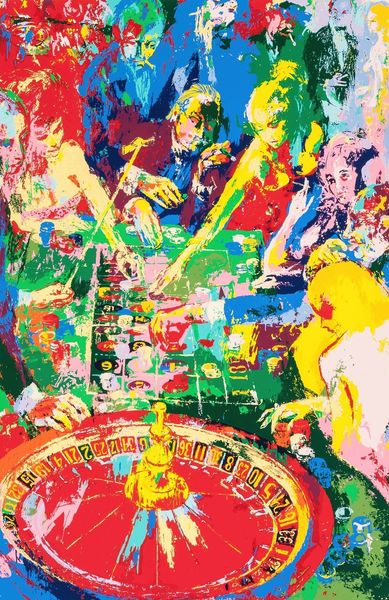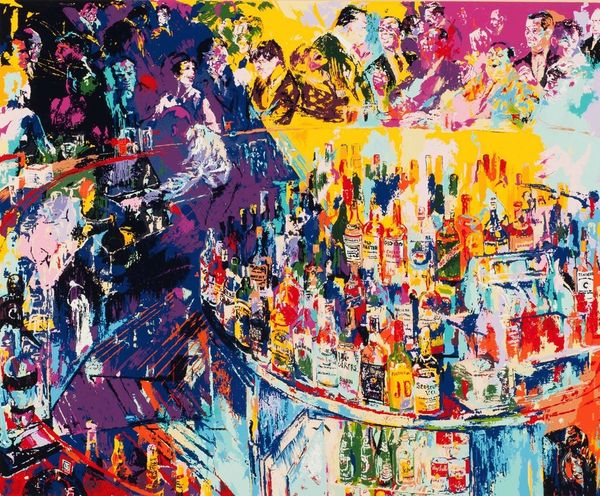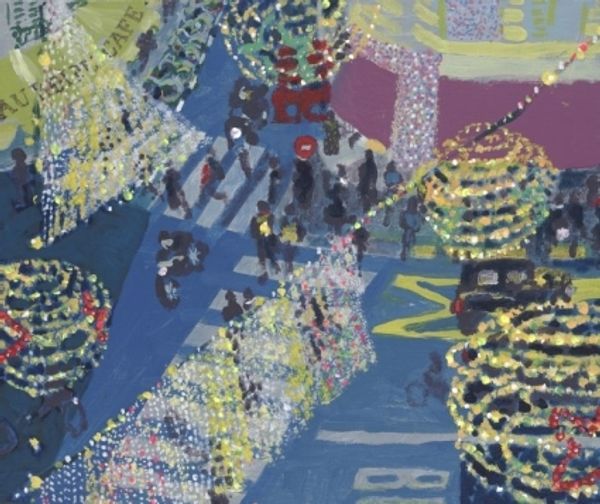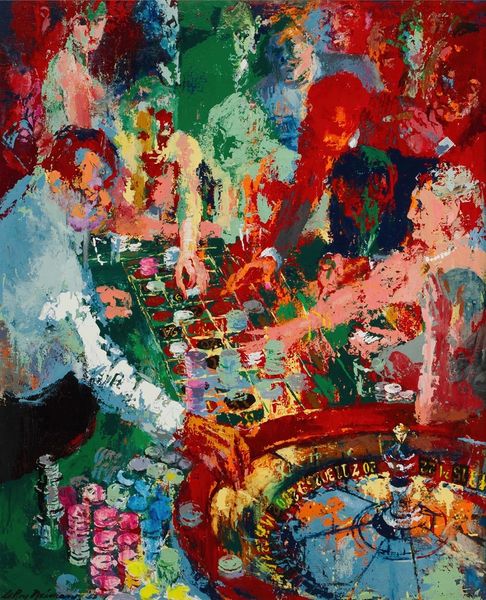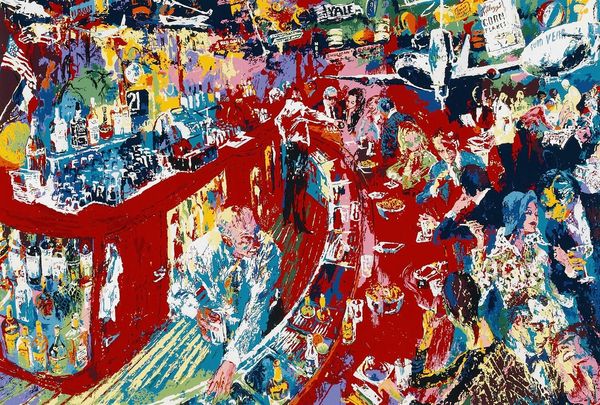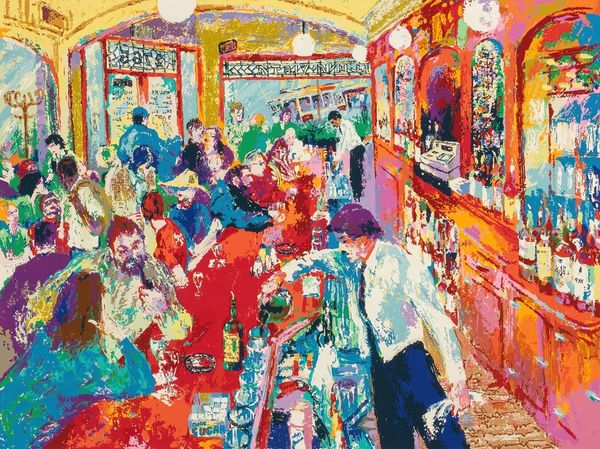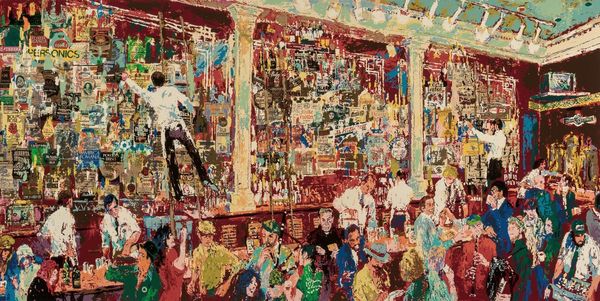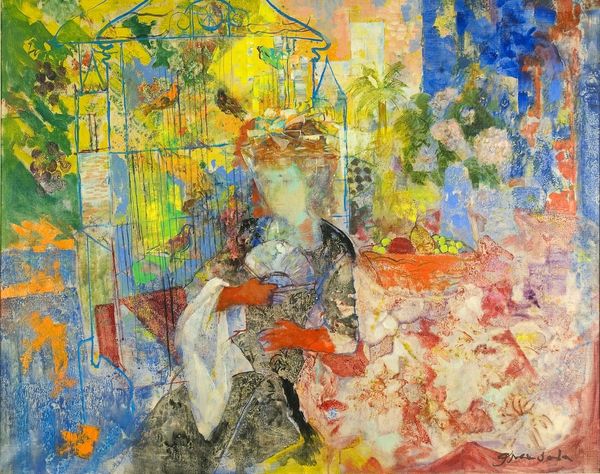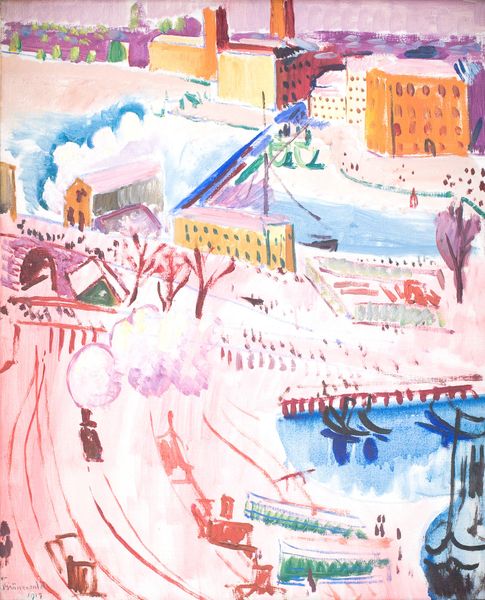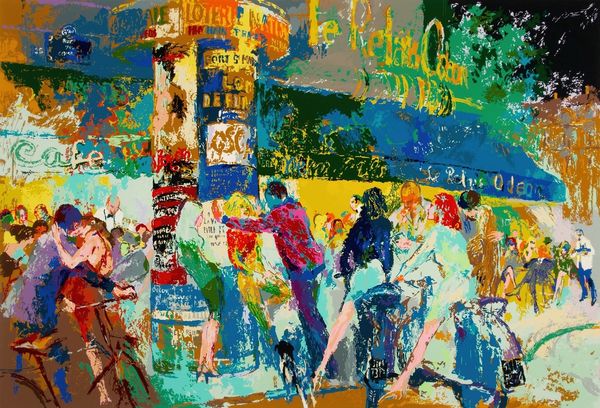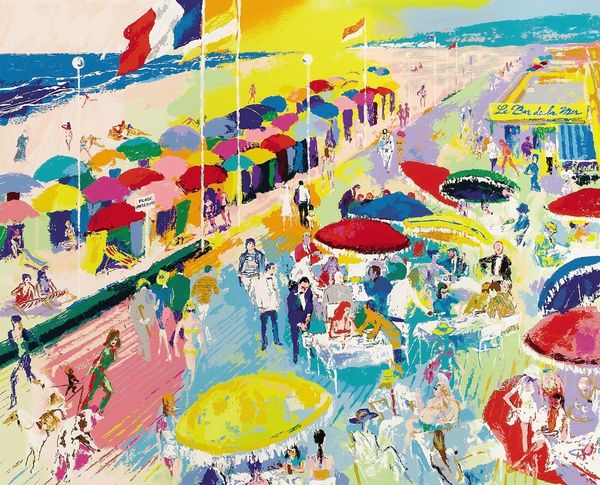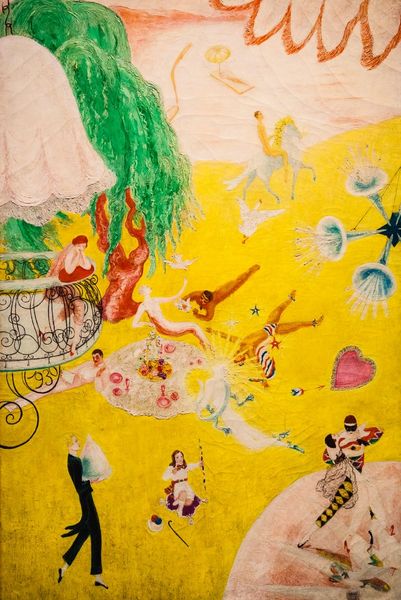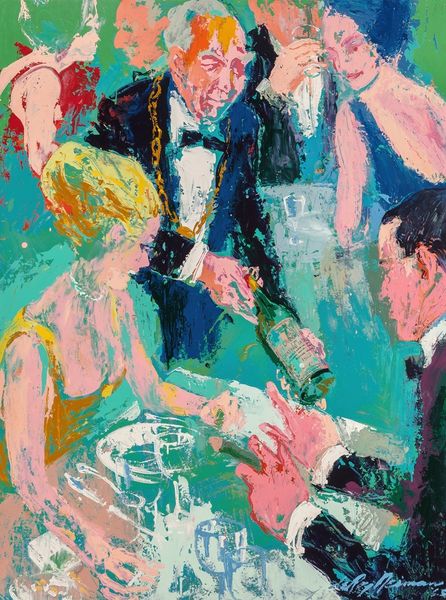
Copyright: Modern Artists: Artvee
Editor: Here we have LeRoy Neiman’s “The Corsican at Roulette,” created in 1986, using watercolor and other painting media. It's quite a vibrant scene, full of blurred movement, but I’m struck by the rather stern gaze of the central figure. What do you see in this piece, particularly considering its setting? Curator: Neiman often depicted scenes of leisure and celebrity, and here the casino becomes a stage for observing social dynamics and power. Notice how the "Corsican," possibly a reference to Napoleon, is presented with a level of authority even within this game of chance. Do you think this challenges or reinforces the romantic ideal of leisure and entertainment that casinos promote? Editor: I think it complicates it. There’s an element of control, maybe even calculation, suggested by the man's expression. It’s not simply about frivolous fun. Does that potentially critique the societal figures portrayed? Curator: Absolutely. By situating this almost regal figure in a casino, Neiman is engaging with the social construction of fame and the democratizing effect of celebrity culture. Casinos became places where one could witness celebrity or participate in the performance of wealth, impacting modern visual culture as a whole. How might a museum in 1986 used an acquisition like this in shaping narratives? Editor: Museums were increasingly engaging with contemporary culture, and including “The Corsican” would allow discussion on how leisure and celebrity intertwine in public perception, but some museums may have felt it wasn't appropriate, given the "low-brow" associations with gambling. This was quite insightful! Curator: And for me, considering how the choice of subject matter impacts museum narratives on accessibility makes this artwork really stand out today!
Comments
No comments
Be the first to comment and join the conversation on the ultimate creative platform.
